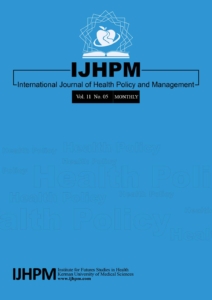Prediction of Cardiovascular Disease Mortality in a Middle Eastern Country: Performance of the Globorisk and Score Functions in Four Population-Based Cohort Studies of Iran
Authors
Affiliations
1Department of Epidemiology and Biostatistics, School of Public Health, Tehran University of Medical Sciences, Tehran, Iran.
2Osteoporosis Research Center, Endocrinology and Metabolism Clinical Sciences Institute, Tehran University of Medical Sciences, Tehran, Iran.
3Digestive Diseases Research Center, Digestive Diseases Research Institute, Tehran University of Medical Sciences, Tehran, Iran.
4Isfahan Cardiovascular Research Center, Cardiovascular Research Institute, Isfahan University of Medical Sciences, Isfahan, Iran.
5School of Population and Public Health, Faculty of Medicine, University of British Columbia, Vancouver, BC, Canada.
6Endocrine Research Center, Research Institute for Endocrine Sciences, Shahid Beheshti University of Medical Sciences, Tehran, Iran.
7Isfahan Cardiovascular Research Center, Isfahan Cardiovascular Research Institute, Isfahan University of Medical Sciences, Isfahan, Iran.
8Ophthalmic Epidemiology Research Center, Shahroud University of Medical Sciences, Shahroud, Iran.
9Cardiac Rehabilitation Research Center, Cardiovascular Research Institute, Isfahan University of Medical Sciences, Isfahan, Iran.
10Noor Ophthalmology Research Center, Noor Eye Hospital, Tehran, Iran.
11Office for Prevention & Control of Heart Diseases, Center for Non-communicable Diseases Control, Ministry of Health, Tehran, Iran.
12Institute of Population Health Sciences, Barts and The London School of Medicine and Dentistry, Queen Mary University of London, London, UK.
13Department of Public Health, Erasmus University Medical Center, Rotterdam, The Netherlands.
14Department of Biomedical Data Sciences, Sections Medical Statistics and Medical Decision Making, Leiden University Medical Centre, Leiden, The Netherlands.
15Prevention of Metabolic Disorders Research Center, Research Institute for Endocrine Sciences, Shahid Beheshti University of Medical Sciences, Tehran, Iran.
16Department of Biostatistics and Epidemiology, Research Institute for Endocrine Sciences, Shahid Beheshti University of Medical Sciences, Tehran, Iran.
Abstract
Background: Considering the importance of cardiovascular disease (CVD) risk prediction for healthcare systems and the limited information available in the Middle East, we evaluated the SCORE and Globorisk models to predict CVD death in a country of this region.
Methods: We included 24 427 participants (11 187 men) aged 40-80 years from four population-based cohorts in Iran. Updating approaches were used to recalibrate the baseline survival and the overall effect of the predictors of the models. We assessed the models’ discrimination using C-index and then compared the observed with the predicted risk of death using calibration plots. The sensitivity and specificity of the models were estimated at the risk thresholds of 3%, 5%, 7%, and 10%. An agreement between models was assessed using the intra-class correlation coefficient (ICC). We applied decision analysis to provide perception into the consequences of using the models in general practice; for this reason, the clinical usefulness of the models was assessed using the net benefit (NB) and decision curve analysis. The NB is a sensitivity penalized by a weighted false positive (FP) rate in population level.
Results: After 154 522 person-years of follow-up, 437 cardiovascular deaths (280 men) occurred. The 10-year observed risks were 4.2% (95% CI: 3.7%-4.8%) in men and 2.1% (1.8-2%.5%) in women. The c-index for SCORE function was 0.784 (0.756-0.812) in men and 0.780 (0.744-0.815) in women. Corresponding values for Globorisk were 0.793 (0.766- 0.820) and 0.793 (0.757-0.829). The deviation of the calibration slopes from one reflected a need for recalibration; after which, the predicted-to-observed ratio for both models was 1.02 in men and 0.95 in women. Models showed good agreement (ICC 0.93 in men, and 0.89 in women). Decision curve showed that using both models results in the same clinical usefulness at the risk threshold of 5%, in both men and women; however, at the risk threshold of 10%, Globorisk had better clinical usefulness in women (Difference: 8%, 95% CI: 4%-13%).
Conclusion: Original Globorisk and SCORE models overestimate the CVD risk in Iranian populations resulting in a high number of people who need intervention. Recalibration could adopt these models to precisely predict CVD mortality. Globorisk showed better performance clinically, only among high-risk women.
Keywords: Cardiovascular Diseases; Decision-Making; Mortality; Prediction Model; Statistical.

